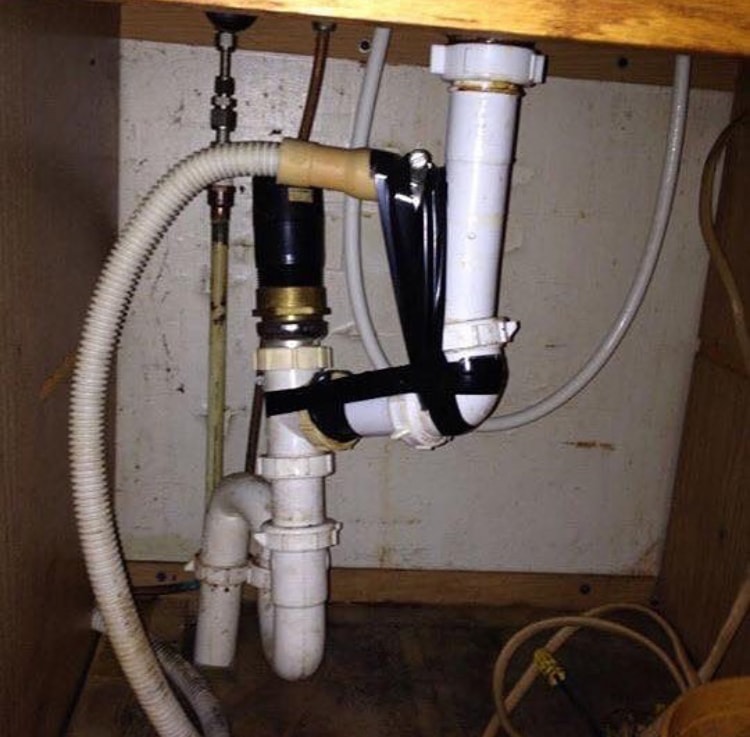Your gutters play a bigger role in protecting your home than most people realize. Be aware of these 9 signs your gutters were installed incorrectly. When they’re installed properly,...

Why Is My Water Pressure Low?
By Mike Holmes
Mike’s Advice / Home Safety & Maintenance
Tuesday, May 12th, 2020 @ 9:33am
Most homeowners only think about their water pressure when it suddenly drops – like when they’re in the shower and someone flushes a toilet. Low water pressure is a common problem, and there are lots of reasons for it—some small and some big.
If it’s just at one tap, it might be that some debris and corrosion has flaked off from inside your pipes and clogged up the faucet aerator. That’s a quick fix that any handyman could do. But, if the problem is throughout your home you should call in a licensed plumber to test your water pressure and check your plumbing.
Narrow supply line
In older houses, the supply lines from the municipality are smaller in diameter than today’s standard, which will cause low water pressure. If the main water intake is only ½” pipe you won’t have good water supply throughout your home. Undersized piping can’t handle the flow demands of a modern household. You should have the supply line upgraded to ¾” minimum.
Corroded piping
A lot of piping is galvanized steel, not copper, and this is the reason for a loss of water pressure in older homes. Galvanized piping corrodes on the inside and deposits build up that block and severely reduce the water flow.
THE SOLUTION: It’s a great idea to remove galvanized piping and upgrade it to new copper or pex. But this can be a very expensive job—and one for the professional plumber only.
Test the flow
Every municipality has a minimum flow rate, depending on where you live, and the water source. (This applies to water taken from a municipal source, not a well.) That minimum rate is the flow that is delivered to your home, at the main water intake. After that point, all water pressure problems are yours—between the main intake and the street, it’s the municipality’s responsibility. So you may also have to call your local government and have them do a test.
Bad Plumbing
Another common reason for low water pressure is bad plumbing jobs in the past. Renovations or additions that altered the plumbing lines, or even some badly done repairs can create flow restrictions and pressure drops. An amateur or bad plumber can make a mess of your lines—using inadequately sized piping, with too many elbows, bad joints or supply lines taken off other lines incorrectly—creating what I call spaghetti plumbing.

Photo taken from Mechanical Hub on Instagram
THE SOLUTION: After 30+ years in the business, I’ve learned how important a good plumber is. They ensure the plumbing systems inside the home function properly, and that any water coming inside the house is maintained within the system.
RELATED
DO YOU HAVE HARD WATER?
Depending on where you live, the water that supplies your house could also be a problem. Some water is highly acidic or has a lot of dissolved minerals in it that can affect copper piping.
With galvanized piping often the problem is ‘hard’ water. Hard water contains higher levels of mineral content than ‘soft’ water. Two of the most common minerals in water are calcium and magnesium.
Hard water from your municipal water system is perfectly safe to drink, but it can cause problems in pipes, appliances and fixtures.
Why Is Hard Water A Problem?
Minerals can accumulate and look ugly – like a stain on a sink, for example, or something that looks like soap scum left in a tub. It’s hard to clean, and it could indicate deeper, and more expensive, problems. Hard water can leave a hard scale surface that ‘clogs the arteries’ of your pipes and inhibits water flow.
This can be a real problem for any appliance household water flows through. Scaling and mineral build up can damage everything from taps to sinks, dishwashers and toilets. Eventually, scaling can interfere with the function of each of these things, and they have to be replaced.
RELATED:

It’s important to test your water quality and or improve it. The Kinetico Premier Series XP softeners for example are ideal for all homes and treat a variety of water conditions.
Electric water heaters are especially vulnerable because hard water can build up on their heating elements, making them inefficient or burning them out completely. Even if you have a natural gas water heater, hard water scaling can reduce efficiency and force you to replace the water tank prematurely.
Hard water can also reduce the flow in showerheads and tap aerators. You can fix that problem by regularly removing the showerhead or aerator and cleaning out the minerals.
My crew member Derek Ullman shows you how to replace a shower head to avoid hard water that can be found in a dirty shower head in the video below.
THE SOLUTION: A simple remedy for hard water problems is to install a water softener. These appliances use sodium salt to help neutralize the minerals. The up-front cost can be a bit high, and there’s the on-going cost of salt, but in the long run, it’s going to be cheaper than replacing a dishwasher, a washing machine, water heater and faucets before their expected lifetimes.
Plumbing is not a DIY job. But if you are looking to take on some DIY jobs, here are a few repair jobs you can tackle on your own.
READ NEXT
Improving Your Water Quality — What you need to know about home water filtration systems?








